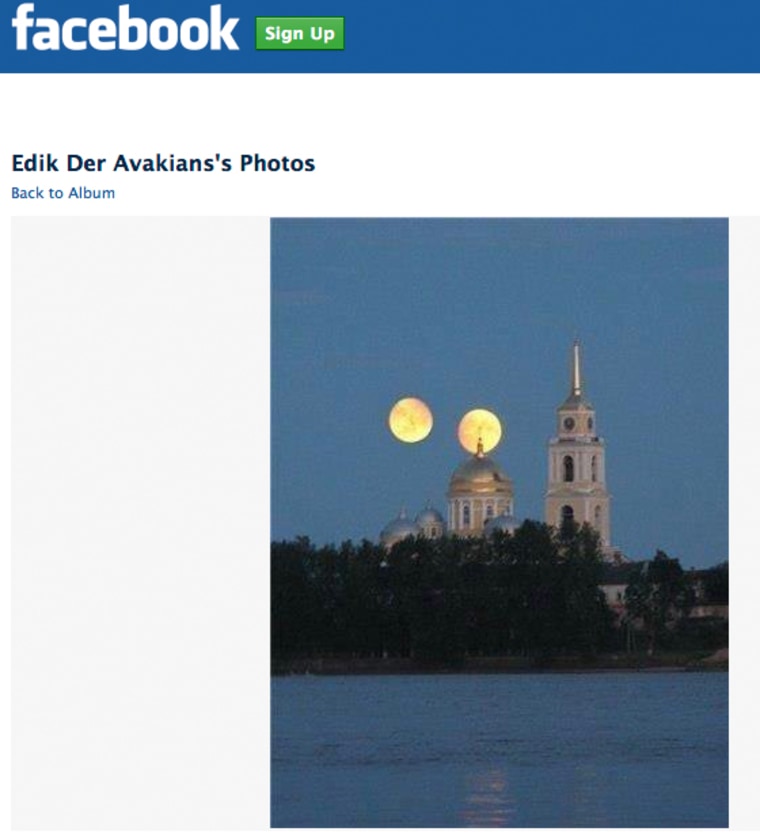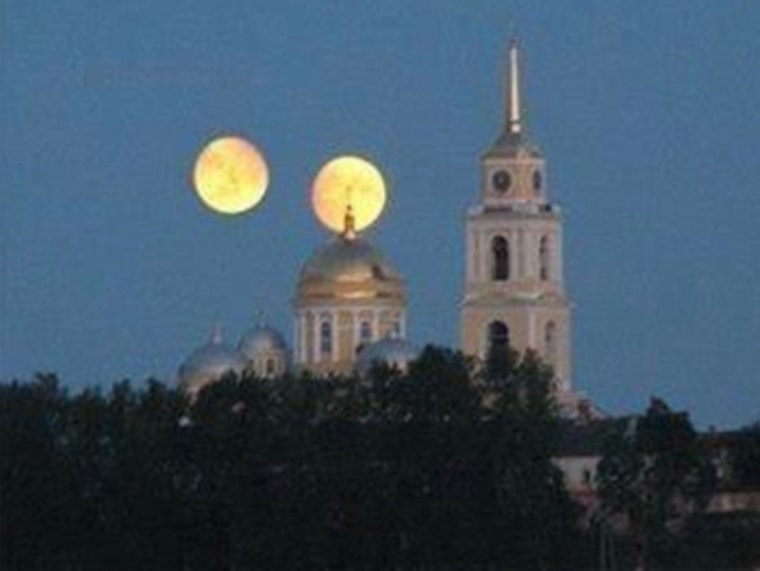
Just when you thought the famous August Mars hoax was dead, dead, dead, it's risen from the grave big time — in part due to Facebook.
The alert makes the round every year: "WARNING: August 27 at 00:30 Lift up your eyes and look up at the night sky. On this night, the planet Mars will pass just 34.65 million miles from the earth. To the naked eye it looks like two of the moon above the ground! ... Share the news with your friends, because no one living on this earth has ever seen!"
This year, they're sharing it with a vengeance: One photo, showing two moons in the sky, has been shared more than 557,000 times on Facebook. There's quite a buzz on Twitter, too.
Bad Astronomy's Phil Plait reviews the history of the Mars moon myth, which goes back a decade. Back on Aug. 27, 2003, there really was a historic encounter with Mars: It was the planet's closest approach to Earth in tens of thousands of years, and when an observer looked through a modest-sized telescope at Mars, the disk would appear as large as the moon's disk looks when seen with the naked eye. That's smaller than the width of a dime held out at arm's length.
Note the comparison between Mars (as seen through a telescope) and the moon (as seen with the naked eye). Those parenthetical qualifications were sometimes lost in translation as the alert about the 2003 encounter was passed along via email. Even worse, the not-quite-right email virus has resurfaced every summer, even when Mars is distant from Earth. This August, for example, the Red Planet is almost as far away as it can get. Its next close approach is due on April 14, 2014.
Tracking down those two moons
Back in the old days, the Mars moon myth went viral via email, but now social networks are the viral channel of choice. And the two-moon picture on Facebook is almost irresistible, even when you know that the claims are mere hokum.
So where did that picture come from? The image had its heyday on Russian social networks last summer, but if you're obsessive about image searching, you'll find that it actually goes back at least four years. It appeared in 2009 on a Russian site called "Dream Worlds," as part of a gallery of fanciful double-moon images. This suggests that someone from Russia picked up the image to play a social-network prank.
As for the buildings shown in the doctored image: They're the domes and bell tower of the St. Nil Stolbenskii Monastery, on Russia's Lake Seliger. Here's a view of the monastery from another angle. Thus, all the evidence points to Russia as the source for this social-media twist on the Mars moon myth.
Whether you live in Moscow, Russia, or Moscow, Idaho, there are plenty of real sights to see in the night sky this weekend: For example, there's the naked-eye nova in the constellation Delphinus ... Venus sparkling in the evening twilight ... Mars and Jupiter in predawn skies ... and if you're lucky, the International Space Station flying overhead. So watch the skies — or, for our Russian friends, smotritye v nyevo.
More about Mars:
Alan Boyle is NBCNews.com's science editor. Connect with the Cosmic Log community by "liking" the NBC News Science Facebook page, following @b0yle on Twitter and adding the Cosmic Log page to your Google+ presence. To keep up with NBCNews.com's stories about science and space, sign up for the Tech & Science newsletter, delivered to your email in-box every weekday. You can also check out "The Case for Pluto," my book about the controversial dwarf planet and the search for new worlds.
